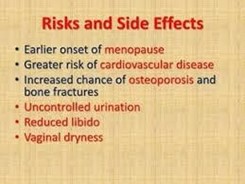A nurse is assessing a client who is 1 week postpartum. Which of the following locations should the nurse palpate to assess the client's fundus? (You will find hot spots to select in the artwork below. Select only the hot spot that corresponds to your answer.)
A
B
C
The Correct Answer is {"xRanges":[299.765625,329.765625],"yRanges":[366.609375,396.609375]}
Choice A rationale: This is incorrect because at about one hour after child birth the fundus should be around the belly button (where it was at 20 weeks of gestation).
Choice B rationale: This is incorrect because at about one hour after child birth the fundus should be around the belly button (where it was at 20 weeks of gestation). It then decreases steadily at approximately 1 cm every 24 hours.
Choice C rationale: One-week post-partum, the fundal height should be about 7 cm below the umbilicus (belly button). This means that the uterus is still larger than normal, but it is contracting and healing. The fundal height may vary depending on factors such as the size and position of the baby, the amount of amniotic fluid, and the mother's body type.
Nursing Test Bank
Naxlex Comprehensive Predictor Exams
Related Questions
Correct Answer is A
Explanation
Choice A rationale:
The client is experiencing signs of an allergic reaction or anaphylaxis, which can be life-threatening. The rapid response team should be called to provide immediate medical assistance.
Choice B rationale:
Intubation is not the immediate priority. Addressing the allergic reaction and ensuring the client's airway, breathing, and circulation are the first steps.
Choice C rationale:
Obtaining an arterial blood gas (ABG) level is not the priority when the client is experiencing respiratory distress and facial swelling.
Choice D rationale:
Administering diphenhydramine may be part of the treatment plan, but the immediate priority is to call for emergency assistance to manage the allergic reaction.
Correct Answer is D
Explanation
Choice A rationale:
Weight loss is not typically an expected manifestation following a total abdominal hysterectomy.
Choice B rationale:
Increased libido is not necessarily an expected manifestation following a total abdominal hysterectomy.
Choice C rationale:
Decreased menstrual bleeding is expected, as the uterus has been removed.
Choice D rationale:
Vaginal dryness is an expected manifestation following a total abdominal hysterectomy due to the removal of the ovaries, which produce hormones that contribute to vaginal lubrication.

Whether you are a student looking to ace your exams or a practicing nurse seeking to enhance your expertise , our nursing education contents will empower you with the confidence and competence to make a difference in the lives of patients and become a respected leader in the healthcare field.
Visit Naxlex, invest in your future and unlock endless possibilities with our unparalleled nursing education contents today
Report Wrong Answer on the Current Question
Do you disagree with the answer? If yes, what is your expected answer? Explain.
Kindly be descriptive with the issue you are facing.
